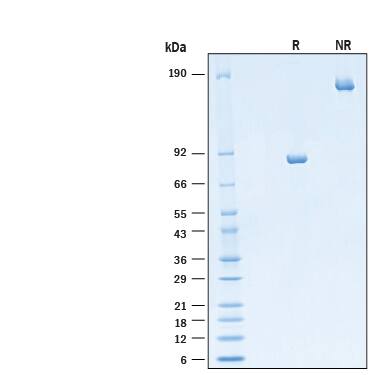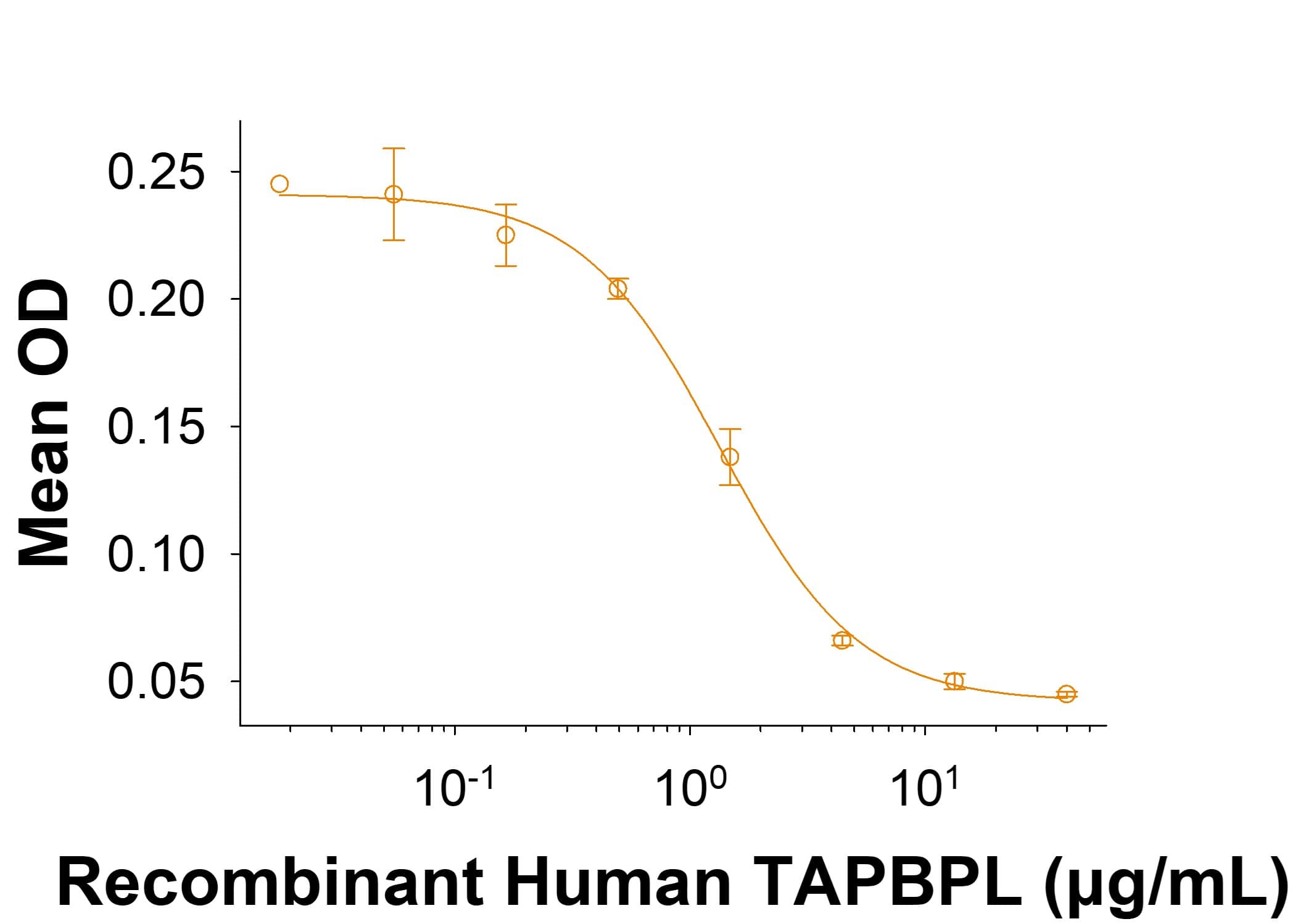Recombinant Human TAPBPR Fc Chimera Protein, CF
R&D Systems, part of Bio-Techne | Catalog # 11171-TP
(CHO-expressed)

Key Product Details
Source
CHO
Accession #
Structure / Form
Disulfide-linked homodimer
Conjugate
Unconjugated
Applications
Bioactivity
Product Specifications
Source
Chinese Hamster Ovary cell line, CHO-derived human TAPBPR protein
| Human TAPBPR (Ala19-Arg404) Accession # Q9BX59.2 |
IEGRMD | Human IgG1 (Pro100-Lys330) |
| N-terminus | C-terminus |
Purity
>95%, by SDS-PAGE visualized with Silver Staining and quantitative densitometry by Coomassie® Blue Staining.
Endotoxin Level
<0.50 EU per 1 μg of the protein by the LAL method.
N-terminal Sequence Analysis
Ala19
Predicted Molecular Mass
68 kDa
SDS-PAGE
75-90 kDa, under reducing conditions.
Activity
Measured by its ability to inhibit anti-CD3 antibody induced IL-2 or IFN-gamma secretion by human T cells. The ED50 for this effect is 0.500-10.0 μg/mL.
Scientific Data Images for Recombinant Human TAPBPR Fc Chimera Protein, CF
Recombinant Human TAPBPR Fc Chimera Protein Bioactivity.
Measured by its ability to inhibit anti-CD3 antibody induced IL-2 secretion by human T cells. The ED50 for this effect 0.500-10.0 μg/mL.Recombinant Human TAPBPR Fc Chimera Protein SDS-PAGE.
2 μg/lane of Recombinant Human TAPBPR Fc Chimera Protein (Catalog # 11171-TP) was resolved with SDS-PAGE under reducing (R) and non-reducing (NR) conditions and visualized by Coomassie® Blue staining, showing bands at 75-90 kDa and 150-180 kDa, respectively.Formulation, Preparation and Storage
11171-TP
| Formulation | Lyophilized from a 0.2 μm filtered solution in PBS with Trehalose. |
| Reconstitution | Reconstitute at 500 μg/mL in PBS. |
| Shipping | The product is shipped at ambient temperature. Upon receipt, store it immediately at the temperature recommended below. |
| Stability & Storage | Use a manual defrost freezer and avoid repeated freeze-thaw cycles.
|
Background: TAPBPR
References
- Hermann, C. et al. (2015) Tissue antigens 85(3):155.
- Teng, M. et al. (2002) European Journal of Immunology 32:1059.
- Lin, Y. et al. (2021). EMBO Mol Med. 13(5):13404.
- Porter, K.M. et al. (2014) Immunology 142:289.
- Margulies, D. et al. (2020) Current Opinion in Immunology 64:71.
- Boyle, L.H. et al. (2013) PNAS 110:3465.
- Hermann, C. et al. (2013) Journal of Immunology 191(11):5743.
Long Name
Tapasin Related Protein
Alternate Names
Tapasin-like, TAPBPL, TAPBPR
Gene Symbol
TAPBPL
UniProt
Additional TAPBPR Products
Product Documents for Recombinant Human TAPBPR Fc Chimera Protein, CF
Product Specific Notices for Recombinant Human TAPBPR Fc Chimera Protein, CF
For research use only
